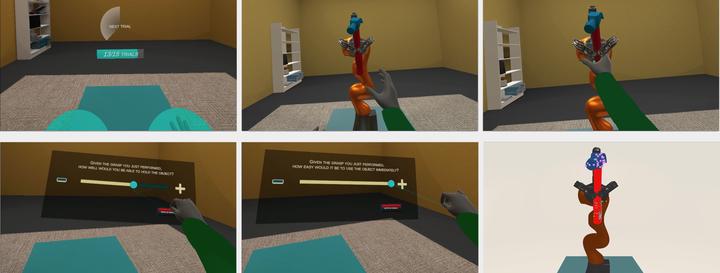
Abstract
A human handing over an object modulates their grasp and movements to accommodate their partner’s capabilities, which greatly increases the likelihood of a successful transfer. State-of-the-art robot behavior lacks this level of user understanding, resulting in interactions that force the human partner to shoulder the burden of adaptation. This paper investigates how visual occlusion of the object being passed affects the subjective perception and quantitative performance of the reaching of the human receiver. We performed an experiment in virtual reality where seventeen participants were tasked with repeatedly taking a tool from the hand of a robot; each of the three tested objects (hammer, screwdriver, scissors) was presented in a wide variety of poses. We carefully analysed the user’s hand and head motions, the time to grasp the object, and the chosen grasp location, as well as participants’ ratings of the grasp they just performed. Results show that initial visibility of the handle significantly increases the reported holdability and immediate usability of a tool. Furthermore, a robot that offers objects so that their handles are more occluded forces the receiver to spend more time in planning and executing the grasp and also lowers the probability that the tool will be grasped by the handle. Together these findings indicate that robots can more effectively support their human work partners by increasing the visibility of the intended grasp location of objects being passed.